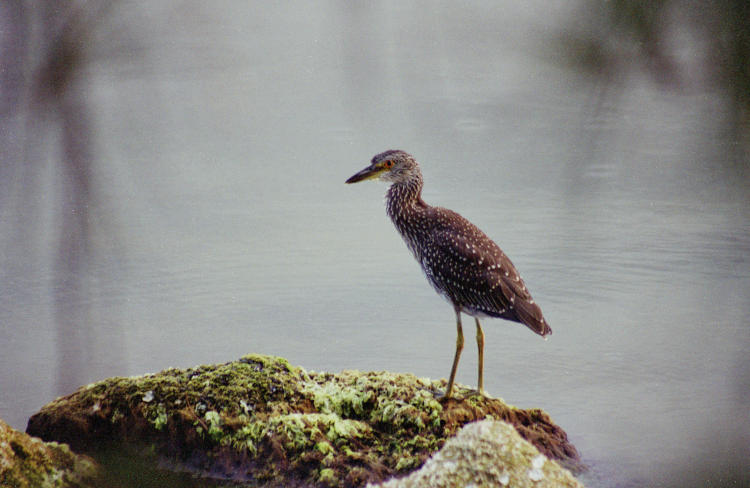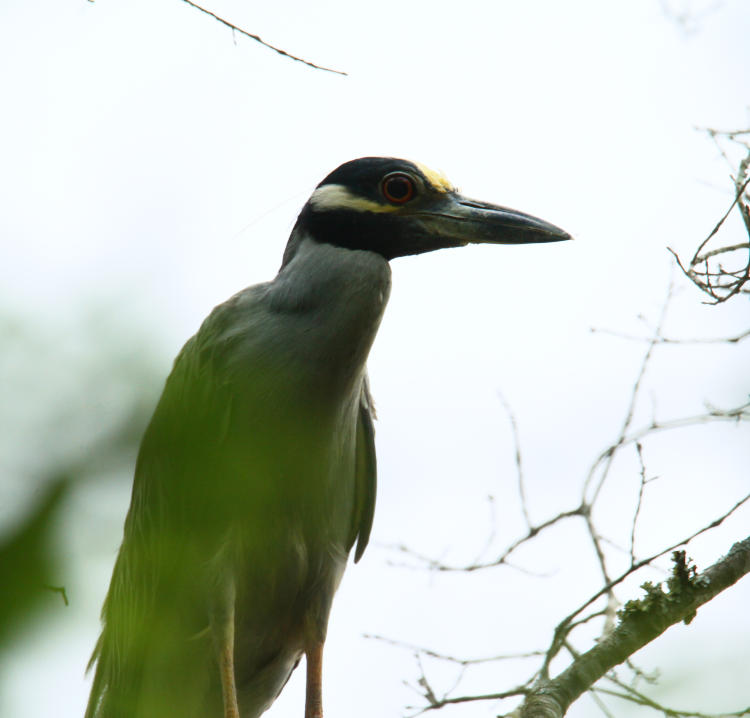
Our opening image this week once again comes from Florida, but I’m not exactly sure where in Florida – Atlantic coast, definitely, but I just can’t remember where I took it. Given the appearance of the rocks, this may well have been right where I frequently snorkeled, though the obscure, defocused foliage at the edges tells me I was shooting through a gap and there weren’t a lot of screening plants near that area. And yet, the subject indicates that I probably would have tried to use whatever cover I could, since this is an immature night heron, probably the first I’d photographed, and I wouldn’t have wanted to spook it off.
‘Night heron’ is a little vague, though – there are two night heron species in the region: the yellow-crowned night heron (Nyctanassa violacea) and the black-crowned night heron (Nycticorax nycticorax.) The juveniles of both species are nearly identical, differentiated largely by the color of their bill – the yellow-crowned has a “mostly dark” bill while the black-crowned has a “yellowish” bill. Though if you look at the images at those links, you’ll find that their photos aren’t as clearly-defined as their descriptions – they’re not that visibly different at all. But given this, I’ll tentatively identify the image above as a black-crowned. The first scan that I have was created in 2004, which is right in line with my tenure in Florida. Now we jump ahead sixteen years to 2020.

This was at the neighborhood pond, and while this is a cropped image (I’m recycling it from a post back then,) it’s only cropped to a vertical – it’s using the full height of the original frame. Obviously, both closer now and using a longer lens; I’m not sure what was used for the first image, but knowing my habits, it was either the old Olympus kit with the 75-260mm zoom, or the Canon with the lightweight 75-300mm, because I typically biked to the snorkeling area with the camera stuff in a waistpack. The bulky and heavy Sigma 170-500mm was carried during dedicated photo trips and not on the bike. But the latter photo was definitely with the Tamron 150-600mm and I was ridiculously close, because the bird was being remarkably mellow. Given that bill color, I identified this as a yellow-crowned instead. The neck lends a little support to this: yellow-crowned have longer necks, but all of the herons can make them appear much shorter, so this is not a reliable metric.
It’s much easier when they’re adults.

Black-crowned above, yellow-crowned below.

Even from a great distance, those heads can be differentiated, so the key for distinguishing the juveniles is, wait around until their adult plumage comes in. Subscribe for more handy tips.
Meanwhile, the primary difference between the success of the two initial photos? Nothing deep or poignant, just the opportunity presenting itself. And carrying the camera as frequently as possible – that bit can only help.



















































